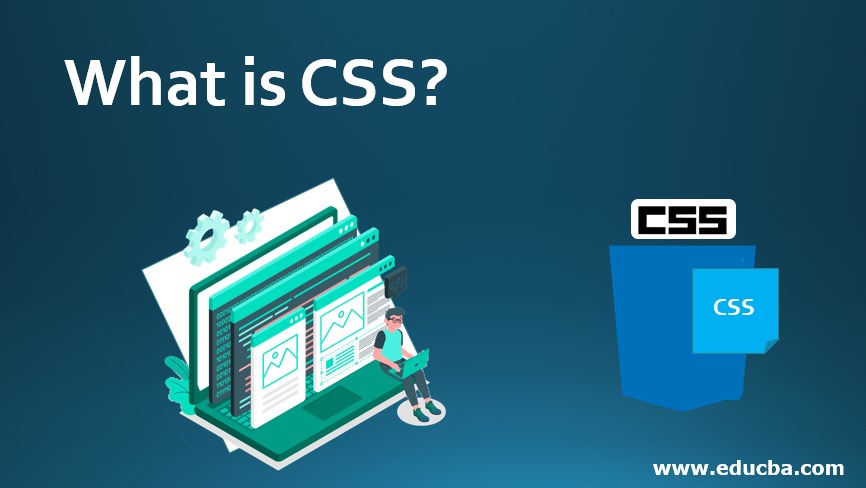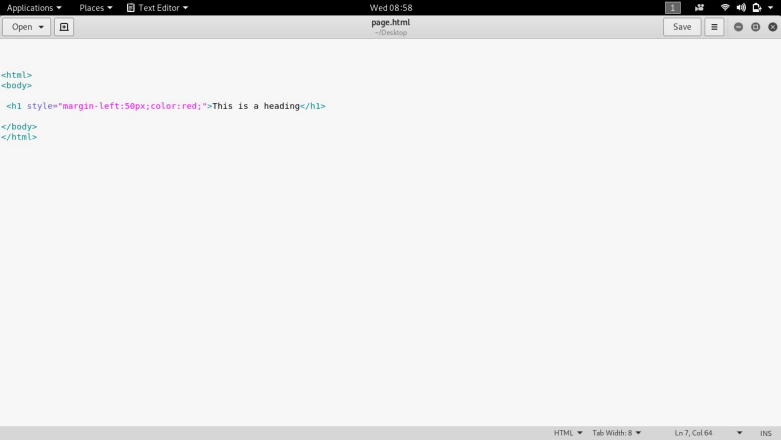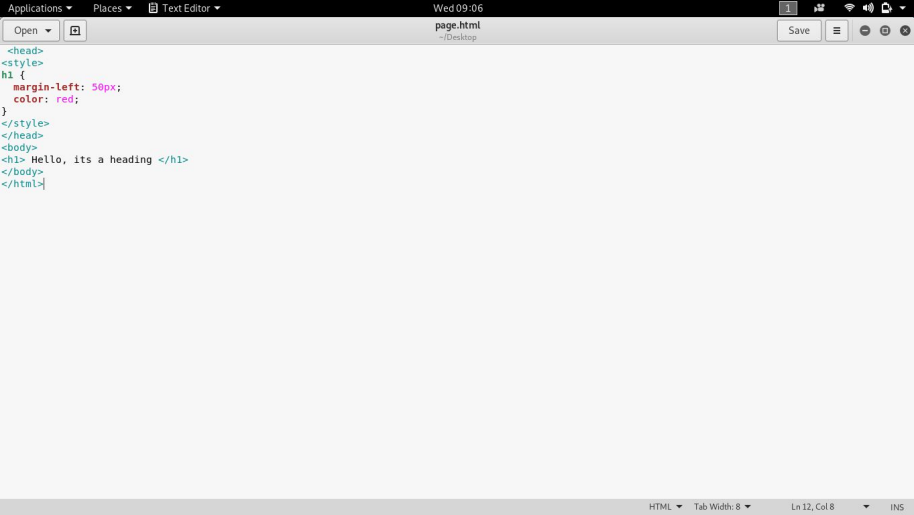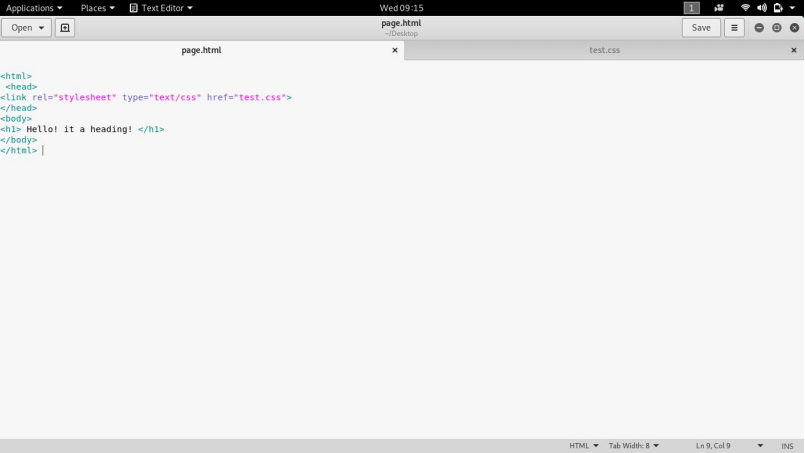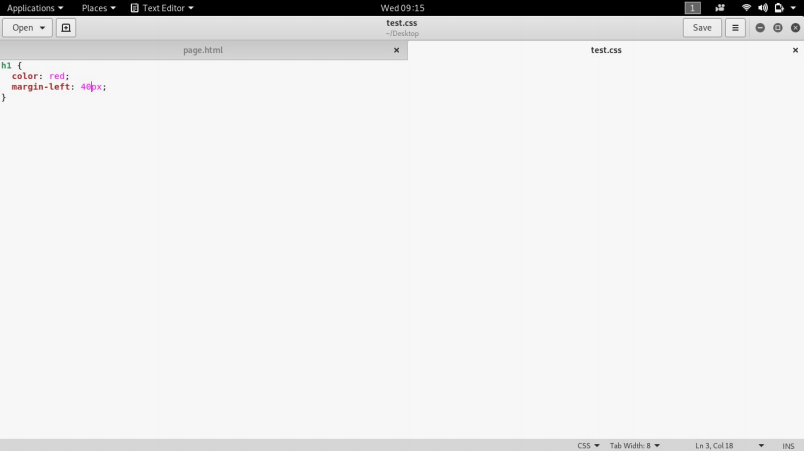Updated June 21, 2023
Introduction to CSS
Cascading Style Sheets, known as CSS, handle the look and feel of webpages. Using CSS, you can control the text color, font style, the distance between paragraphs, the sizing and displaying of columns, the use of background images or colors, layout designs, display variations for different devices and screen sizes, and a range of other effects. CSS is simple to learn and to understand, but it controls the submission of an HTML document powerfully. People usually combine CSS with the HTML or XHTML markup languages.
What is CSS?
You must have seen web pages on the internet. For instance, when you open Facebook, you get an interactive screen to see the images, play the video, write comments, and do several activities. Well, my friend, it is what we call a web page. So, to create a web page, we need HTML, a markup language used to create the web page’s structure.
The limitation with HTML is that we can only give shape and size to the web page but cannot make it look attractive, and here is where it comes in. It stands for Cascading Style Sheet, which allows us to utilize different attributes to make the web page look beautiful, attractive, or professional. Changing the structure of the tables or divisions, coloring the text, setting margin and padding, and choosing text font are a few things that we can do with the help of this.
In very simple terms, we can define it as the style sheet language that modifies the look or structure of the web page. Web developers use this language to decorate the web page. The web page usually includes structure, design, and client site functionality. HTML provides the structure, a scripting language called JavaScript provides the client-side functionality, and CSS provides the design.
The current version of CSS is CSS 4, released on 24 March 2017. The latest version is faster than the last version, CSS 3. You must integrate it with HTML to implement its effect; you cannot use it alone. Based on the way of integration of it with HTML, it had three types: Inline, Internal, and External. In Inline, the codes have to be written in the same line; in internal, the codes must be defined between a style tag inside the head tag, and an external file needs to be connected with the HTML page.
How does CSS make Working so Easy?
The cascading style sheet makes the web page interaction a bit easier. It allows us to design the web page to offer a good user experience and allow the user to navigate things easily. Moreover, it portrays the web page in something decent, which could not be done with merely HTML. In addition to its benefits, CSS can make the page slightly heavier. However, it can also be used effectively to manage the web page size as needed.
On the one hand, where it offers ease of work to the users; on the other hand, it also provides ease of implementation to the web designers. You can choose among the inline, internal, and external CSS styles based on how many CSS codes you need to add. Every styling mode offers a very easy mechanism to introduce style on the web page.
What can you do with CSS?
Below are a few points that show the capabilities:
1. Modifying web page structure
We can change the table’s shape and divs that give the web page structure. It provides attributes that can be used to curve the vertices of the rectangle and perform various other tasks.
2. Working with font
It allows us to change the font and the color of the text. We can choose either of the colors by merely writing its name in the corresponding attribute. In simple words, it can decorate the texts as well.
3. Improves user experience
By using the cascading style, sheet developers can enhance the quality of web pages, eventually resulting in an amazing user experience. It also makes navigation easy for users.
4. Create good effects
Using CSS, one can implement the effects like shadow effects, making things look attractive. The shadow generation could also take part in the structure and the other elements like text.
Working with CSS
Here comes the most useful and crucial section, which will give us an idea about how we can work with CSS, implement it, or integrate the web page.
Here we will see how to work with a different type of styling.
1. Inline CSS
In inline CSS, we put the CSS codes in one line along with the HTML tag. Usually, we use inline CSS when we have to use that format only once or if the formatting needs just a few attributes to be added. Though it is not used very frequently in actual web development, we are supposed to learn everything.
Input:
Output:
- Here is the image for the input; you will see that the codes are written in Lavender color and also present along with the HTML code.
- To provide margin to the heading from left margin-left attribute has been used, and 50 PX is the value of the attribute that defined how long the margin should be.
- The color attribute is used to change the color of the heading. Red is the value of the attribute that made the heading looks red.
2. Internal CSS
The cascading style sheet is considered internal when features are assigned to any tag, so wherever the tag is defined, it will inherit all the assigned features by default. To introduce it internally, developers must write the CSS code between style tags in the head section.
Input:
Output:
- Here we applied the same attributes in the h1 tag we had done in the example of inline CSS. The only difference is how it has been defined on the web page.
- This code is written between <style> </style> to implement internally.
- h1 { attributes..} means whatever the attributes are, those will be applied automatically to all the texts were written between the h1 tag.
3. External CSS
It is called external because this type involves creating a separate CSS file linked with the web page to apply the defined styles to the tags. Using external CSS makes the main web page’s size light, as no CSS code needs to be written directly on that web page. Instead, all the CSS code is contained in a separate file, which is then linked to the web page.
HTML File Input:
CSS File Input:
Output:
- Here we have created a separate file named test.css, linked to the main HTML page using the link tag and its real and style attribute.
- The attributes have been defined for the h1 tag in the CSS file.
- After the CSS file is successfully linked with the HTML file, it inherits the features of an h1 tag from the test.css file.
Advantages
It adds decency to the web page. It makes the web page a better interaction platform where users can feel comfortable working with the web application. By using CSS, developers can achieve a wide range of things. We will watch out for some of the common benefits of CSS, making it a crucial part of web designing or, specifically, UI development.
- Simplifies user interface: Sometimes, the web page designed merely using HTML looks horrible to work with. Adds the amaze to the web page, making it look cool and simple so the user can focus on their work.
- Decorate the web page: The cascading style sheet language makes the web page look presentable. Web developers can use various attributes within CSS together to design the web page.
- Customize the web page layout: It has various attributes that work with the web page’s structure and make it the way the developer wants. It allows web designers to customize the application interface to fit the desired domain.
- Easy to integrate: This provides us with many benefits; it’s not even a bit tough to integrate CSS with HTML. There are various ways to introduce CSS on the web page, and either could be used very quickly.
- Easy coding: We already understood that CSS is not a programming language but a styling language. One has to remember fixed and limited numbers of attributes that make CSS coding very easy.
Required Skills
Given below are the required skills:
- It is very important to understand what kind of skill set we need to work with it. Well, by this section, we have some idea about what we will need to code in CSS. But again, we will be going through the skills that can help us in CSS coding.
- As we have already discussed, it is not a programming language, so it is clear that we don’t need logic here. However, it does have some attributes that you should remember. Based on the requirement, you will be able to adjust the values for the corresponding attribute, but before we add values to any attribute, we must know what kind of values it accepts.
- To code in this, one should understand HTML because CSS integrates it smoothly with the layout provided by HTML to generate a decent web page. So that the major skills that we will need to code in CSS.
Scope
It is an evergreen styling language that lets us design the web page. We all know that the internet is a big thing in the contemporary period and will keep growing. Since the internet primarily revolves around accessing website information, web designers will continue to receive numerous opportunities. In addition to being a web designer, one can also grow their career in user interface development.
Who is the right audience for learning CSS technologies?
It is obvious that anyone keen to learn anything could be the best audience, but to be more specific, the students having web designing in their subjects could learn CSS. At the professional level, it’s a must technology for web designers. I have seen many people who always wanted to make their website to be the best audience for this tutorial or the CSS technology.
How will this technology help you in career growth?
This plays a vital role in web design. The exponential increase in internet users suggests that we can also expect an increase in the number of websites. And if the demand rises, opportunities and growth will come vigorously. The number of web designers in the next few years should grow rapidly.
Also, people who work as a web designers in any organization become very proficient in this technology and usually do freelancing work. Online platforms like Freelancer.com, upwork.com, and so on connect freelancers to the person who wants to hire them, freelancers. Web designing could also be done remotely, so there is a huge chance of getting projects from abroad.
Conclusion
CSS is the best and most crucial part of web designing. It enables developers to enhance the appearance of web pages beyond what can be achieved with HTML alone. As a styling language, it works with the web page’s structure and adds various tag features, resulting in visually appealing elements. It has consistently been one of the top technologies and will maintain its position for a long time.
Recommended Articles
We hope that this EDUCBA information on “What is CSS?” was beneficial to you. You can view EDUCBA’s recommended articles for more information.

